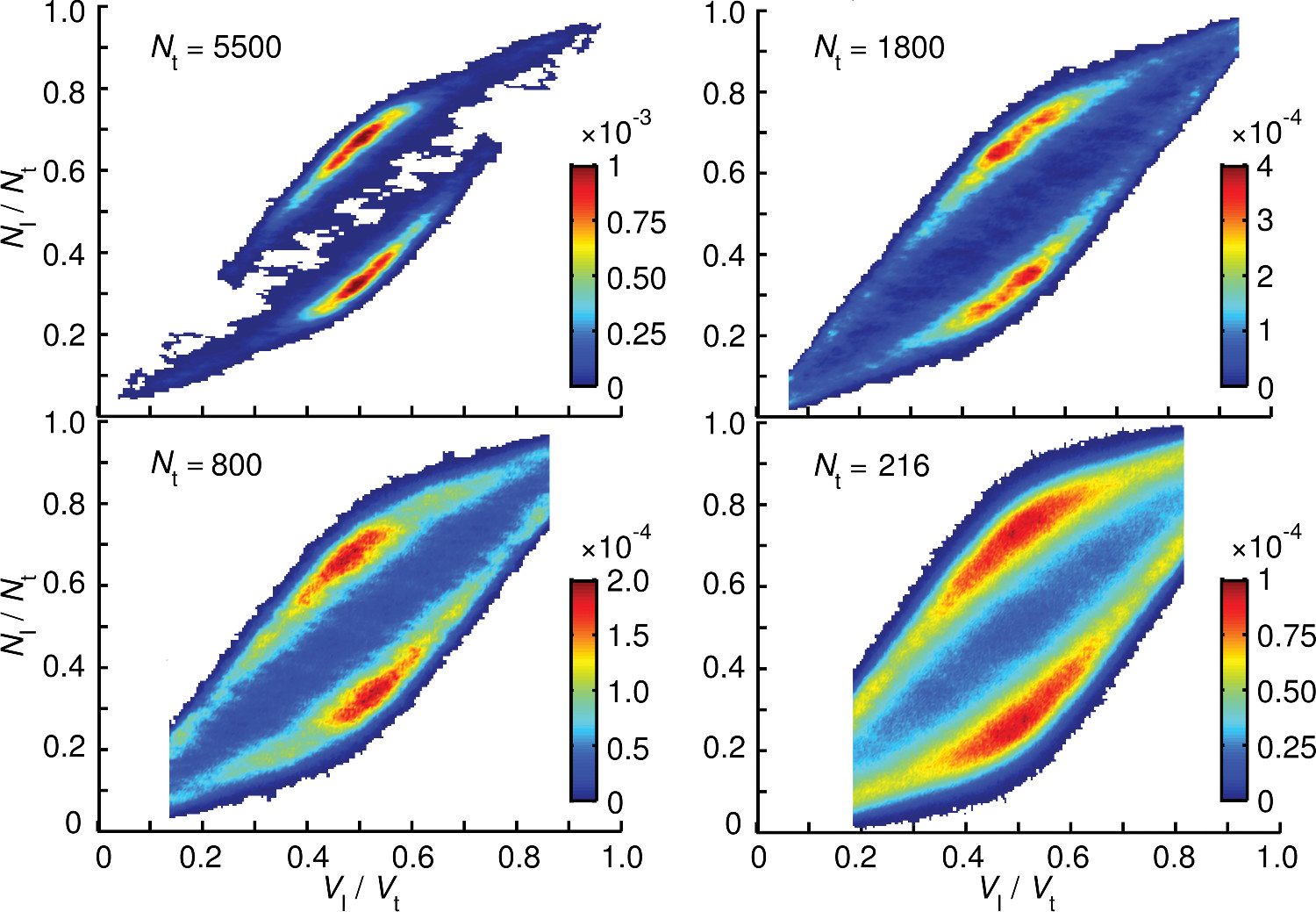J. Chem. Phys. 143, art. no. 114113/13 pages (2015)
Since the seminal paper by Panagiotopoulos [Mol. Phys. 61, 813 (1997)], the Gibbs ensemble Monte Carlo (GEMC) method has been the most popular particle-based simulation approach for the computation of vapor–liquid phase equilibria. However, the validity of GEMC simulations in the near-critical region has been questioned because rigorous finite-size scaling approaches cannot be applied to simulations with fluctuating volume. Valleau [Mol. Simul. 29, 627 (2003)] has argued that GEMC simulations would lead to a spurious overestimation of the critical temperature. More recently, Patel et al. [J. Chem. Phys. 134, 024101 (2011)] opined that the use of analytical tail corrections would be problematic in the near-critical region. To address these issues, we perform extensive GEMC simulations for Lennard-Jones particles in the near-critical region varying the system size, the overall system density, and the cutoff distance. For a system with N = 5500 particles, potential truncation at 8σ and analytical tail corrections, an extrapolation of GEMC simulation data at temperatures in the range from 1.27 to 1.305 yields Tc = 1.3128 ± 0.0016, ρc = 0.316 ± 0.004, and pc = 0.1274 ± 0.0013 in excellent agreement with the thermodynamic limit determined by Potoff and Panagiotopoulos [J. Chem. Phys. 109, 10914 (1998)] using grand canonical Monte Carlo simulations and finite-size scaling. Critical properties estimated using GEMC simulations with different overall system densities (0.296 ≤ ρt ≤ 0.336) agree to within the statistical uncertainties. For simulations with tail corrections, data obtained using rcut = 3.5σ yield Tc and pc that are higher by 0.2% and 1.4% than simulations with rcut = 5 and 8σ but still with overlapping 95% confidence intervals. In contrast, GEMC simulations with a truncated and shifted potential show that rcut = 8σ is insufficient to obtain accurate results. Additional GEMC simulations for hard-core square-well particles with various ranges of the attractive well and for n-decane molecules represented by the TraPPE force field yield data that support the trends observed for Lennard-Jones particles. The finite-size dependence of the critical properties obtained from GEMC simulations is significantly smaller than those from grand-canonical ensemble simulations. Thus, when resources are not available for a rigorous finite-size scaling study, GEMC simulations provide a straightforward route to determine fairly accurate critical properties using relatively small system sizes.
